
- Population: 742,452,000
- Area: 3,930,000 square miles
- Largest Country: Russia
- Smallest Country: Vatican City
- Largest City: Istanbul
- Highest Point: Mount Elbrus, 18,510 feet above sea level
- Lowest Point: Caspian Sea, 92 feet below sea level
- Popular Countries: France, Spain, Italy, UK, Germany
- Popular Cities: Paris, Barcelona, Rome, London, Berlin
- Religions: Christianity, Islam
- Geography: Europe Is the World’s Second Smallest Continent
- Geography: There Are 50 Countries in Europe
- Politics: 28 European Countries Are Members of the European Union
- History: The Name Europe Comes from Greek
- History: Europe Gave Birth to Western Civilization
- Religion: Europe Has a Christian Majority
- Tourism: European Cities Draw Curious Tourists
- History: World War I Ended Four European Empires
- History: World War II Was the World’s Largest War
- Geology: Several Popular Mountains Take Europeans to New Heights
- Europe Makes 44% of the World’s Wine
- The EU and the Council of Europe Both Have a Europe Day
- Europe Has the World’s Richest Economy
- The Second Most Active Volcano in the World is in Europe
- Europe Contains Both the Smallest and Largest Countries in the World
Europe Is the World’s Second Smallest Continent
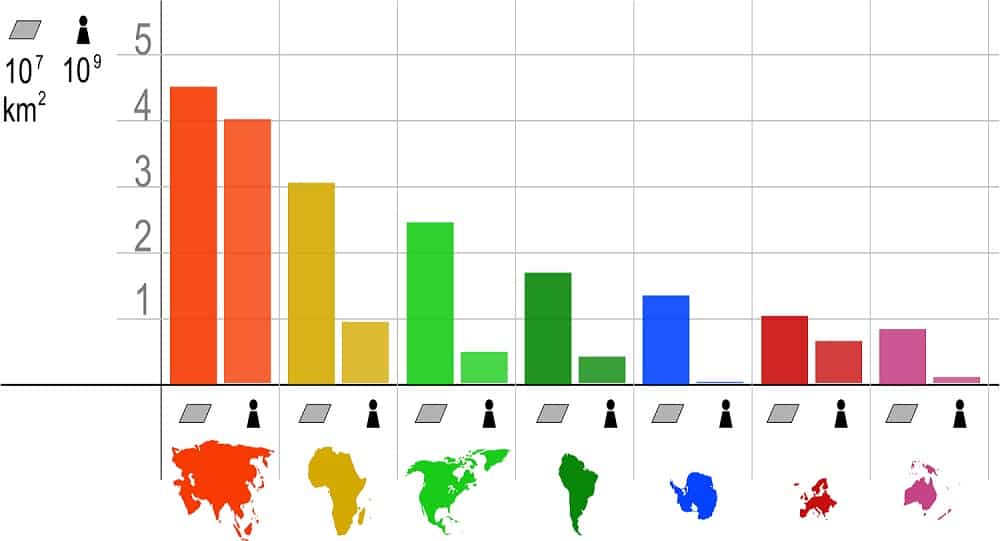
The current size of Europe is 3,930,000 square miles. Europe is the world’s second smallest continent. It covers approximately 2% of the Earth’s surface. Australia is the world’s smallest continent and Asia is its largest.
There Are 50 Countries in Europe
Europe facts tell us there are 50 countries in Europe, including the world’s smallest country, Vatican City. The most visited countries in Europe are France, Spain, Italy, the United Kingdom, and Germany.
Europe is home to five transcontinental countries that straddle the border between Europe and Asia. These countries are Azerbaijan, Georgia, Kazakhstan, Russia, and Turkey. It’s interesting to note that even though only part of Russia is on the European continent, it is still the largest country in Europe. Russia isn’t the only transcontinental country of note – Turkey happens to be the home of the largest European city, Istanbul.
28 European Countries Are Members of the European Union
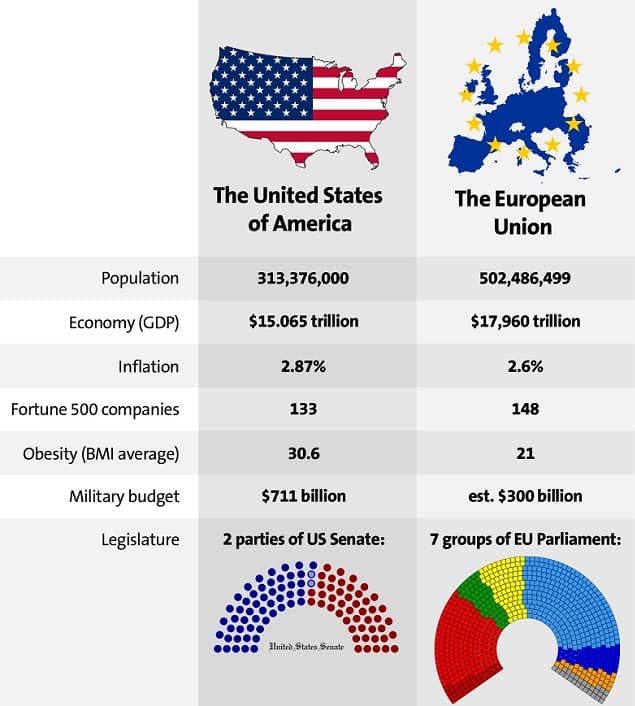
The European countries don’t just share a continent and borders – they’ve also made many political and economic ties. Europe facts indicate the Council of Europe has 47 member states. Its focus is on democracy and human rights. It cannot make binding laws, but works to create standards for human rights in Europe, among other things. Belarus, Kazakhstan and Vatican City are not members of the Council of Europe.
Twenty-eight European countries have joined together to become the European Union. The European Union makes binding laws that serve to advance the economic and political goals of the area. Nineteen of the member states even use the euro as their currency.
The Name Europe Comes from Greek
Europe facts tell us the name Europe is believed to have derived from Greek. Europa was a princess in Greek Mythology. Homer also wrote of a Queen named Europe. Later, in 6 BC, Greek geographers used Europe as a geographic name. The modern understanding of what we know of as Europe was developed in the 19th Century.
Europe Gave Birth to Western Civilization
Europe has a unique claim to fame: it is the home continent of the Greeks who founded Western civilization. We can thank these early Europeans for democracy, philosophy, history, drama, verse, medicine and science.
Europe Has a Christian Majority
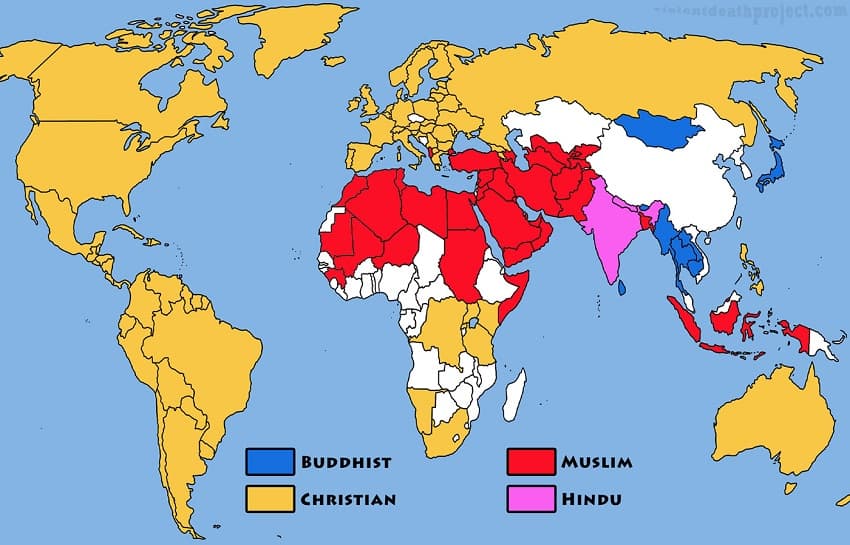
According to the Pew Foundation, about 5% of Europe’s population is Muslim. This accounts for only 2.4% of all Muslims worldwide. Even though only 5% of the population of Europe identifies as Muslim, Islam is the second largest religion in Europe. In contrast, Europe is home to 26% of the world’s Christians. 76% of Europeans identify as Christian, making this the most popular European religion. Europe facts show that 18% of Europeans are not affiliated with any religion.
European Cities Draw Curious Tourists
European cities are popular with tourists. Their rich cultural history makes them great destinations for art, food and history lovers. Paris is the most popular urban European destination. Barcelona, Rome, London and Berlin round out the top five European cities for tourism. The cities of Europe provide a rich experience, with museums, restaurants, and tours that cater to curious travellers.
World War I Ended Four European Empires
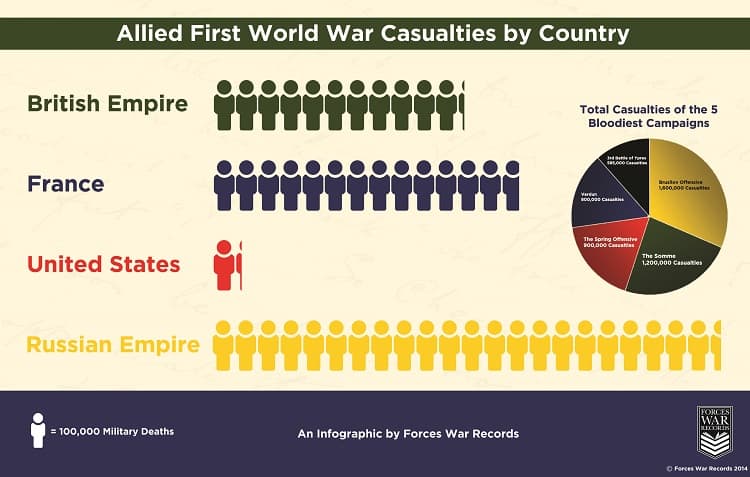
Europe has seen numerous wars among its constituent countries, but World War I drew countries from outside the continent. Most of the fighting during World War I was focused in Europe. It became a war of two sides: the Allies and the Central Powers. Initially, the Allies included the United Kingdom, France and Russia. The Central Powers were Germany and Austria-Hungary. Eventually, more countries joined these alliances, including the United States and Japan.
World War I was one of the largest wars the world has seen. World War I ended the German, Russian, Ottoman and Austro-Hungarian empires and led to a new map of Europe. The war also led to the formation of the League of Nations, which would set the foundation for the formation of the United Nations.
World War II Was the World’s Largest War
Unfortunately, World War I left some European countries in turmoil. Twenty-one years later, a new war broke out; one that would become the largest war in modern history. Europe facts tell us World War II was the deadliest war on Earth and featured over 30 countries embroiled in combat over four continents.
World War II featured the Allies and the Axis as opponents. The Allies included the United Kingdom, Russia, Greece and the United States, among others. The Axis powers were formed by Italy, Japan and Germany. The Allies eventually triumphed over the Axis powers, leading to the sectioning of Germany into two parts and the formation of the United Nations as an international regulatory organization.
Several Popular Mountains Take Europeans to New Heights
Europe features numerous mountain ranges. The tallest mountain in Europe is Mount Elbrus in Russia. Popular mountain ranges include the Alps, the Carpathians, the Caucasus Mountains and the Pyrenees mountain range. These gorgeous mountain ranges are great for hiking and skiing. The mountains of Europe have long captured the imagination of visitors, with their snow-covered peaks and rustic chalets.
Europe Makes 44% of the World’s Wine
There are 21 countries in the European Union that produce wine. The European Union regulates wine zones to ensure clear labeling of wine varieties to help vineyards and consumers. Europe facts indicate approximately 44% of the world’s wine and raisins come from European Union vineyards. The three largest wine producing countries in the world are all EU members: Italy, France, and Spain.
The EU and the Council of Europe Both Have a Europe Day
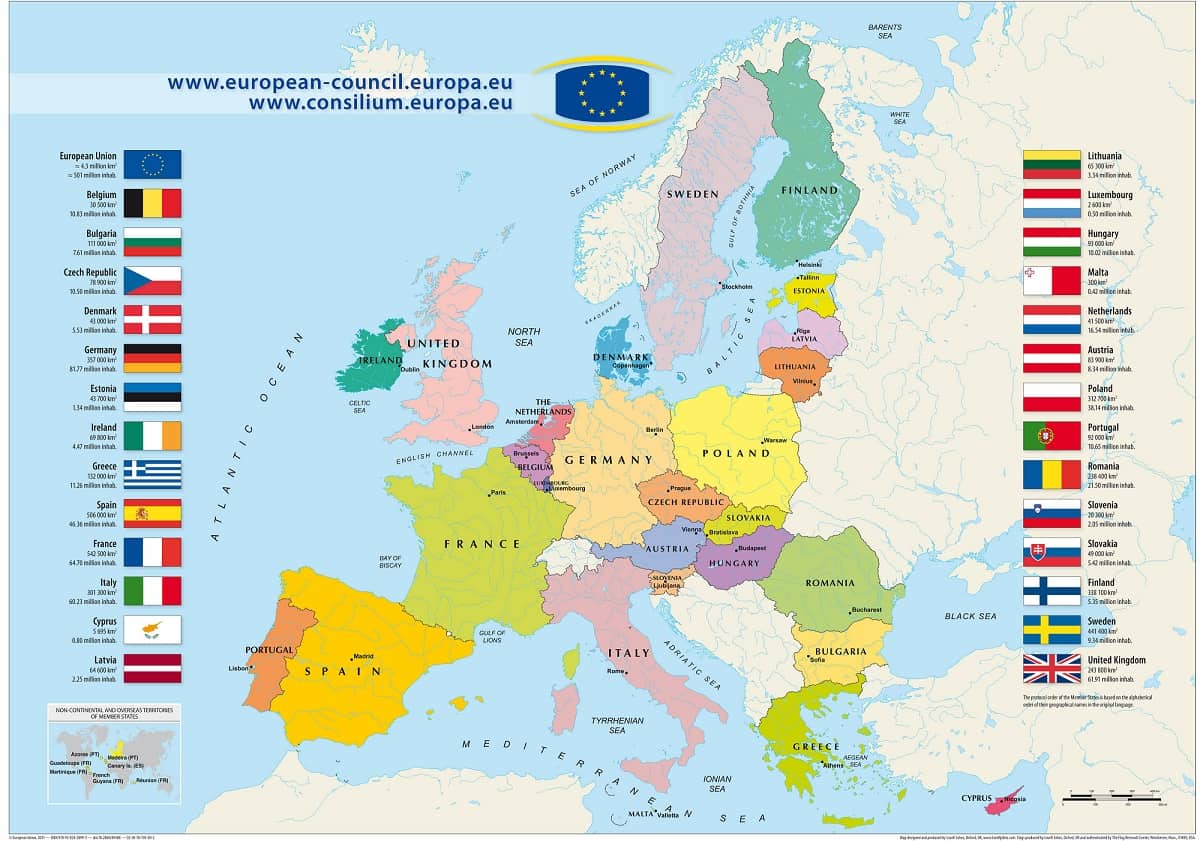
Europe Day is a day of unity for European countries. Unfortunately, this may not be helped by having two separate days to celebrate! The Council of Europe inaugurated the first Europe Day as the day of its creation, May 5 1949. The European Union, on the other hand, recognizes May 9 as Europe Day. They began celebrating Europe day in 1950.
Europe Has the World’s Richest Economy
One third of the world’s wealth is located in Europe. Europe is the world’s richest continent, even though it is the second smallest. The European Union is the world’s largest economic area, with 18 countries sharing a single currency, the euro.
The Second Most Active Volcano in the World is in Europe
Mount Etna is Europe’s most active volcano. Located in Sicily, Mount Etna last exploded in 2014, though it is constantly active. Mount Etna is the world’s second most active volcano. The world’s most active volcano is Kilauea in Hawaii.
Europe Contains Both the Smallest and Largest Countries in the World
Europe is home to the world’s smallest and largest countries. Vatican City, located within Rome, is considered the world’s smallest independent state. It is 0.2 square miles big. Russia is the world’s largest country with an area of 6,602,000 square miles. Europe facts inform us that most of Russia’s land is located in Asia; however the European part of Russia contains about 77% of the Russian population.
Europe Facts – Facts about Europe Summary
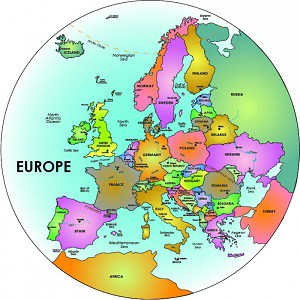 Europe is the world’s second smallest continent. It is comprised of 50 countries, 47 of which are united as the Council of Europe. Twenty-eight countries are in the European Union, which sets economic and political laws for the region. Europe gave birth to Western civilization and continues to be a popular tourist destination. European countries include the United Kingdom, France, Italy, Spain, Russia and Germany. The most popular cities in Europe are Paris, Barcelona, Rome, London and Berlin.
Europe is the world’s second smallest continent. It is comprised of 50 countries, 47 of which are united as the Council of Europe. Twenty-eight countries are in the European Union, which sets economic and political laws for the region. Europe gave birth to Western civilization and continues to be a popular tourist destination. European countries include the United Kingdom, France, Italy, Spain, Russia and Germany. The most popular cities in Europe are Paris, Barcelona, Rome, London and Berlin.
Was this page helpful?
Our commitment to delivering trustworthy and engaging content is at the heart of what we do. Each fact on our site is contributed by real users like you, bringing a wealth of diverse insights and information. To ensure the highest standards of accuracy and reliability, our dedicated editors meticulously review each submission. This process guarantees that the facts we share are not only fascinating but also credible. Trust in our commitment to quality and authenticity as you explore and learn with us.
